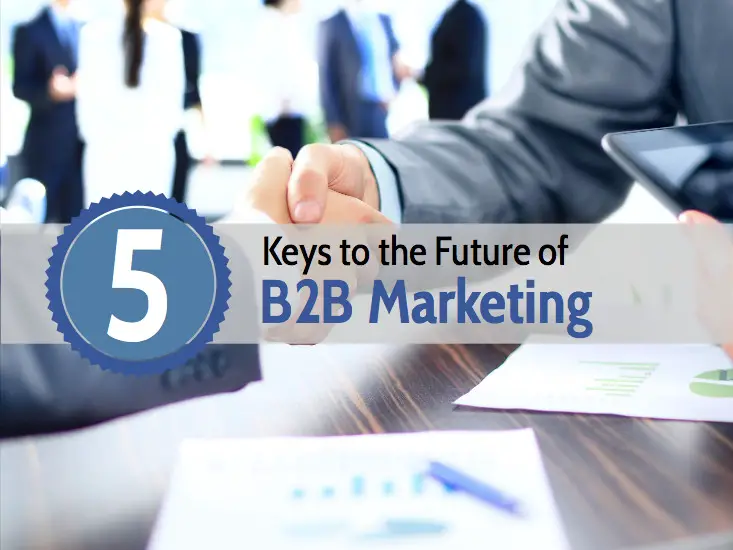Here Shweiki teams up with Mathew Sweezey—the head of B2B Marketing Thought Leadership for Salesforce.com and the author of Marketing Automation for Dummies—to present a webinar on the five keys necessary for the future of B2B marketing.
1. Understanding the Power of Digital Discovery
The first key to B2B marketing is understanding what digital discovery really means and what that does to the consumer. For example, when a consumer uses their cell phone to perform a search on Google, they use more power than NASA did to land a man on the moon.
The average person is now online or in front of a digital screen more than 12 hours a day. What this means for B2B marketers is that by 2020, 80% of the entire buying cycle will be under the control of the marketing department. It is important to understand how the Internet has changed the way people consume content in order to cater to an audience.

The black dotted line in the graph above illustrates the daily consumption of content. It is going to be flat for a long time because day to day, emails, blog posts, twitter and social engagements are going to remain the same. The red dotted line shows when people are researching—for example, when they ask Google a question.
There are three things people want to do when they go on the Internet and three types of content they want:
- Escape: Content that helps people escape from their daily lives.
- Learn: Content used to help people learn how to do their job better.
- Research: Content used when people want to solve a problem or find answers to their problems.
2. Managing Unlimited Channels
In today’s world, marketers have zero control over marketing channels because of all the new media available online. Now, consumers can interact with each other without the brands’ involvement on these channels.

3. Realizing Organic Reach is Limited
In actuality, only 2-4% of a company’s fans are going to see what they post in an organic framework. This means that it is important to leverage more paid social media. Paid social media is a highly engaging, proactive way to psychographically target people and get a company’s message in front of people who have had no prior contact with said company.
It is also important to have more social media. In order to effectively use social media, one must make many different posts with different images and copy that all link back to one article. Then one should share across multiple channels. The ability to combine paid social media and multiple social media postings is the best way to reach as many people as possible.
4. Remembering Branding Becomes Mindset
In the traditional landscape, branding is how a marketing department portrays the company. In today’s dominant online landscape, brands are now built on online experiences that a marketer does not necessarily have control over. How does one create positive experiences which are scalable, live 24/7 and come from all departments? The answer is having a good mindset and realizing that everything will end up online.

5. Tracking Customer Journeys
A customer’s journey is based on cookie-based tracking. In a modern digital world, anyone has the ability to learn everything about a person by looking at their online cookies. Cookies can reveal a person’s behaviors, which are the most telling part of an individual. If a company knows an individual’s behaviors then they can nurture those behaviors through a very specific customer journey.
Customer journeys are not a one size fits all. Everyone has a different customer journey because they need to be dynamic based on the cookies’ digital fingerprint and be tactically and strategically executed for each specific set of problems and goals.

Being proactive with customer journeys helps us get in front of the right people at the right time and being reactive helps to convert people after they have become interested.
TWEETABLE FACTS





